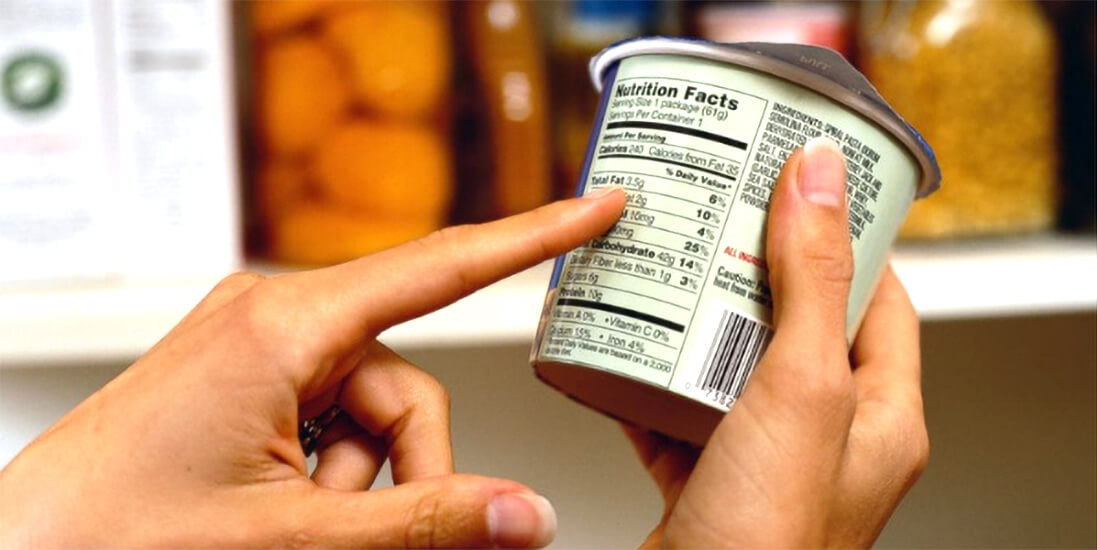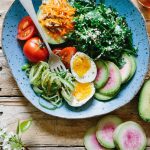How to read a product label

It can sometimes become a challenging task to know how to identify ‘A Healthy Choice’, and this campaign is designed to make it easier for you to make these choices.
We would first like to first emphasise that food is generally not ‘black and white’ in terms of healthiness, and that it is not helpful for our mindset to label food as being inherently ‘good’ or ‘bad’.
However, it is a useful skill to learn how to read the label on a package of food, and to assist us in reducing less healthy elements that we might unknowingly eat.
Those of us who are time-poor may find this a daunting task, but with a little practise and remembering a few key points, it becomes easier. We have also made this task a little easier for you!
Shortly, you will notice that particular products on our shelves have been marked ‘A Healthy Choice’. Suzannah Smart, from Smart Start Dietetics, has personally reviewed this list of products, and she gives them her stamp of approval. The full list of foods and the criteria she has used to select them are available here.
Please keep in mind that these products are a small selection of healthy options to give you a taste. However, there are many other products without this logo that are also healthy choices. Please use these as examples to compare with similar foods available to find other healthy options.
When reading a food label, there are three main things to check; the nutrition table, the ingredients list and other claims or labels.
The Nutrition Table
This is where you will find a useful comparison tool; the ‘per 100g’ column, which is standard on all products sold in Australia. It must contain energy, protein, total fat, saturated fat, carbohydrate, sugar and sodium. Other optional components include fibre, vitamins and minerals.
A good rule of thumb is to compare the ‘per 100g’ column to the following guidelines (which you can pick up as a handy wallet-sized card from the service desk).
If a product does not fit within these guidelines, the next step is to check the ingredients list, as it may still be a healthy food.
Ingredients List
The ingredients in a product are listed in order, from greatest to smallest, by weight.
We believe in checking how many ingredients are ‘whole’ foods, or ones that you recognise by name. Although food safety in Australia is well regulated, it’s still best to aim for most of the foods you eat to have minimal non-food ‘additives’ if possible.
It’s also important to check where components like sugar or fat are coming from. For example, a product high in sugar, that is made from 100% whole fruit, would be considered very healthy, and you may just need to be mindful of portion size. However, if a product’s sugar is coming mostly from ingredients such as added sugar, dextrose, glucose, golden syrup, honey, sucrose etc, then it may not be the healthiest option.
Similarly, if a product is high in fat but most of this is ‘unsaturated’ fat, then it may still be a healthy product. Unsaturated fats are great for our skin, brain and heart and contain essential fat-soluble vitamins, especially if the fat comes from ingredients such as olive oil, nuts or seeds.
Other Claims and Labels
There are many other labels and claims you will find on products, some of which are useful and some of which can be a bit misleading.
It may also be of interest to understand whether a food is local, which can be indicated by the ‘Made in Australia’ logo.
The ‘Australian Certified Organic’ is another logo that is tightly regulated and can be trusted, however keep in mind that not all organic products are necessarily healthier (for example they may still be high in sugar or salt).
The ‘Low GI’, ‘Health Star Rating’ and ‘Heart Foundation Tick’ can be used as a loose guideline for choosing between similar types of products, however we recommend to check the nutrition table and ingredients panel as well on these foods.
Many food claims, such as ‘fat free’, are regulated by Australian laws however companies are often good at using different wording. For example, ‘light/lite’ can mean a food is low in fat, but it might just mean that it is simply light in colour.
So, in summary, it really does pay to check what’s in the food you’re eating as sometimes it can be surprising. Remember the old saying of ‘don’t judge a book by its cover’? This is why we recommend you become more familiar with labels, and how to read them.
To learn more about label reading, book in for a hands-on practical session with Suzannah Smart at Barossa Fresh.




